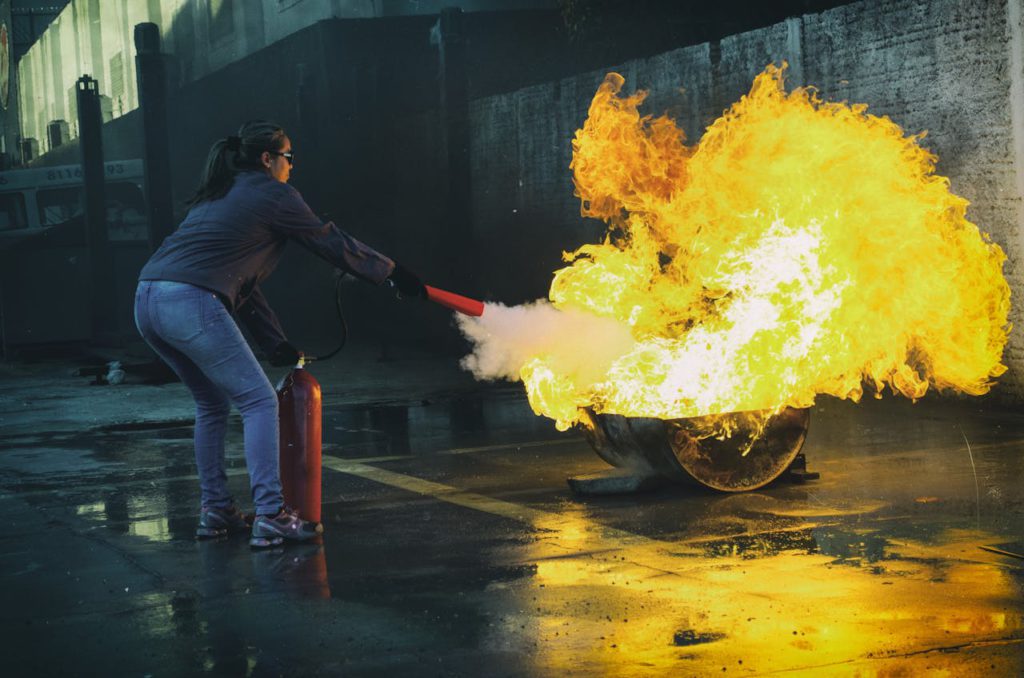Technological advancements in fire safety have led to innovative solutions designed to protect lives and property. Smoke curtains and guards are crucial in containing smoke and preventing its spread during a fire emergency. These dynamic systems offer a blend of functionality, efficiency, and aesthetic appeal, making them indispensable components of modern building design and construction.
Understanding Smoke Curtains and Smoke Guards
Smoke curtains and smoke guards are passive fire protection systems designed to control the movement of smoke within a building in the event of a fire. Unlike traditional fire doors or partitions, which may obstruct visibility and hinder access, smoke curtains and smoke guards operate discreetly, blending seamlessly into the architectural environment. They are typically installed above doorways, openings, or corridors and are activated automatically in response to smoke detection or manually through a fire alarm system.
How Smoke Curtains Work
Smoke curtains are fire-resistant fabric or material that deploys vertically or horizontally to form a barrier, effectively containing smoke and preventing its spread to adjacent areas. When activated, the curtain descends rapidly, guided by tracks or cables installed discreetly within the ceiling. By confining smoke to the area of origin, smoke curtains facilitate safe evacuation routes for building occupants and allow firefighters to access the affected areas more effectively.
The Role of Smoke Guards
Smoke guards, however, are retractable barriers or shields installed horizontally above openings such as atriums, stairwells, or lobby areas. Like smoke curtains, smoke guards deploy automatically in the event of a fire, creating a barrier preventing smoke from spreading vertically throughout the building. By containing smoke at the source, smoke guards help maintain visibility and access to escape routes, enhancing overall safety and evacuation efforts.
Advantages of Smoke Curtains and Smoke Guards
One of the critical advantages of smoke curtains and smoke guards is their ability to provide passive fire protection without compromising architectural aesthetics. Unlike bulky fire doors or partitions, smoke curtains and guards remain hidden from view when not in use, preserving the open and inviting atmosphere of modern building designs. Additionally, their automated deployment ensures swift and efficient response to fire emergencies, minimizing the risk of smoke inhalation and heat exposure for occupants.
Innovations in Design and Technology
Significant advancements have been witnessed in the design and technology of smoke curtains and guards in recent years. Manufacturers are developing systems with enhanced fire-resistant materials, improved deployment mechanisms, and integrated smoke detection and control capabilities. Additionally, modern smoke curtains and smoke guards are designed to comply with stringent fire safety standards and regulations, ensuring their reliability and effectiveness in real-world scenarios.
Applications in Various Settings
Smoke curtains and smoke guards find applications in various settings, including commercial buildings, high-rise structures, healthcare facilities, educational institutions, and hospitality venues. Their versatility and adaptability make them suitable for retrofitting existing buildings or integrating into new construction projects. Whether used to protect retail spaces, office buildings, or public venues, smoke curtains and smoke guards offer a flexible and reliable solution for enhancing fire safety and mitigating risk.
Integration with Building Systems
One of the key advantages of modern smoke curtains and smoke guards is their integration with building automation and fire detection systems. These systems allow for seamless coordination between smoke curtains, smoke guards, fire alarms, and other life safety devices, ensuring swift and effective response to fire emergencies. The integration enables the automatic activation of smoke curtains and smoke guards upon detecting smoke or fire, minimizing human intervention and reducing response times. Additionally, data analytics and remote monitoring capabilities provide building owners and facility managers with real-time insights into the status and performance of smoke protection systems, allowing for proactive maintenance and optimization.
Enhancing Occupant Safety and Well-being
Beyond their role in containing smoke and preventing its spread, smoke curtains and smoke guards contribute to building occupants’ overall safety and well-being. By maintaining clear evacuation routes and preventing smoke infiltration into escape routes, these systems facilitate swift and orderly evacuation during fire emergencies, reducing the risk of injuries and fatalities. Moreover, their discreet design and automated operation minimize panic and confusion among occupants, fostering a sense of security and confidence in the building’s fire safety measures. As such, smoke curtains and smoke guards protect physical assets and safeguard the most valuable asset of all: human lives.
Innovations in fire safety technology have revolutionized how buildings are protected against the threat of smoke and fire. Smoke curtains and smoke guards stand at the forefront of these advancements, offering functionality, reliability, and aesthetic appeal. As building codes and regulations evolve, smoke curtains and guards will play an increasingly vital role in ensuring compliance and enhancing fire safety standards. With their ability to contain smoke, maintain visibility, and facilitate safe evacuation routes, these systems provide peace of mind for building owners, occupants, and emergency responders, ushering in a new era of fire safety excellence.

